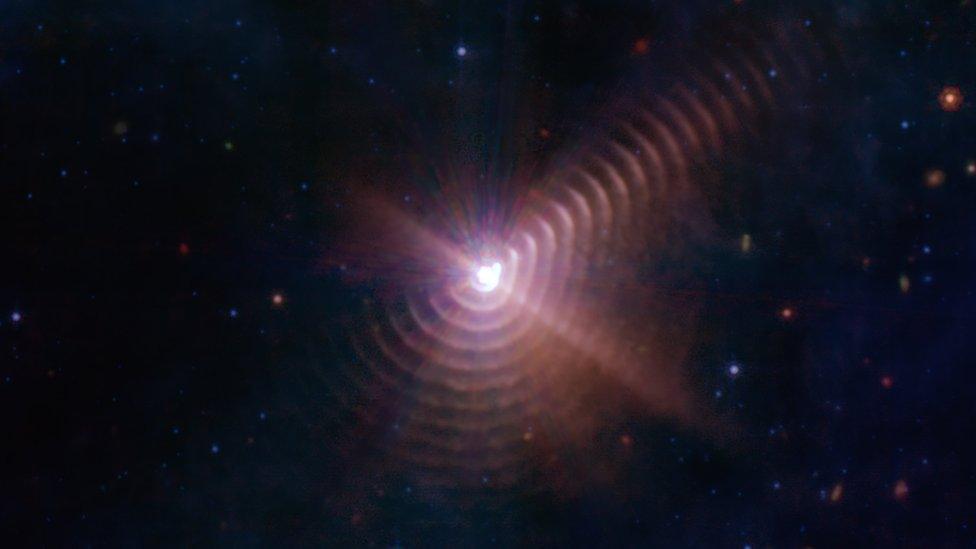James Webb telescope: Why does this star look 'dusty'?
- Published

Can you see the two stars in the middle of the picture?
The James Webb telescope has solved a mystery behind an image of a dusty-looking star.
It shows a Wolf-Raynetstar - a huge star that's coming to the end of its life, next to an O-type star.
An O-star is a large, blue and extremely hot star.
By looking at it closely, the James Webb telescope was able to see how the dust patterns around the stars formed as they moved around each other over time.
The huge light streams you can see coming off are often formed when James Webb takes a picture of a really bright star
Two stars
If you look closely at the image, you can see two stars. They're orbiting each other.
The smaller one is a special Wolf-Raynet star - about 10 times the mass of the Sun.
The second is much bigger - an O-type star - and it's 30 times the mass of the Sun!
When two stars orbit each other like this in space, astronomers call it a binary.
Think of how big our Sun is - then look at the size of these compared to it!
Dust clouds
The two stars in the binary take eight years to orbit each other.
As they move closer together, then further apart, the huge dust clouds that you can see as layers in the picture are formed.
The wind formed by the stars moving creates dust particles, which settle in space.
The layers that you see in the image are formed by centuries of dust clouds, forming during the binary's orbit.
The James Webb telescope has already taken incredible images from our huge universe!
Looking into the past
Because of how long it takes light to travel to Earth from far out in space - where the James Webb telescope is looking - we can see years of star, cloud, and dust formations.
In theory, if you had a big enough telescope, we could see back to the extremely early stages of the universe!
The James Webb telescope hopes to discover these secrets of our universe through looking at the stars - which might give us answers about where we all come from!
- Published17 January 2022
- Published13 October 2022
- Published14 September 2021
